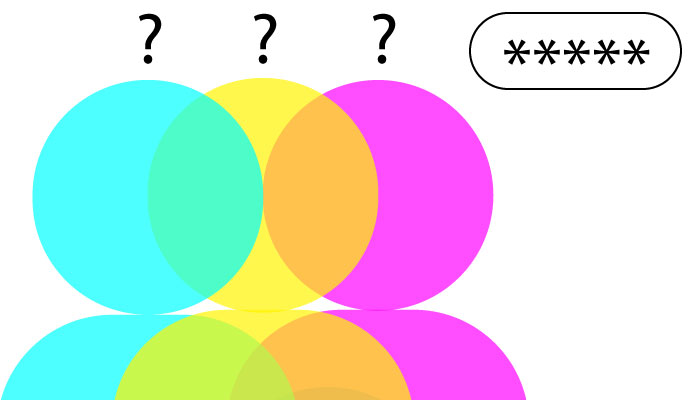Image: Canva
In the grand tapestry of innovation, there are threads often overlooked – hidden gems that sparkle with untapped potential. As we delve into the theme of the 2024 European Action Day for the Equality of People with Disabilities, “Transformative Solutions for Inclusive Development: the role of Innovation in Fuelling an Accessible and Equitable World,” let’s uncover some fascinating uncommon facts that shed light on the path towards a more accessible tomorrow.
1. The Power of Sound:
Did you know that sound can be a powerful tool for enhancing accessibility? In recent years, innovative solutions like “sonification” have emerged, transforming data and information into auditory signals that can be interpreted by people with visual impairments. From turning weather maps into melodic compositions to translating stock market fluctuations into musical notes, sonification opens up new avenues for accessing complex information in a way that’s intuitive and inclusive.
2. Nature’s Blueprint:
Nature has long been a source of inspiration for innovators, and the world of disability inclusion is no exception. Biomimicry, the practice of emulating nature’s designs and processes, has led to remarkable breakthroughs in accessibility. For instance, scientists have drawn inspiration from the structure of a butterfly’s wing to develop lightweight yet durable materials for prosthetic limbs. Similarly, the echolocation abilities of bats have sparked the creation of navigation aids tailored for individuals with visual impairments. By looking to nature’s blueprint, we can unlock a wealth of solutions that blend seamlessly with the world around us.
3. The Language of Touch:
While technology often prioritizes sight and sound, the sense of touch remains an underexplored frontier in accessibility innovation. Tactile interfaces, utilizing physical textures and vibrations to convey information, hold immense promise for people with disabilities. For instance, researchers are currently investigating the utilization of tactile displays to convey maps and diagrams to individuals with visual impairments. Moreover, wearable devices equipped with haptic feedback can offer real-time alerts and notifications to users with hearing impairments.By embracing the language of touch, we can craft truly immersive and inclusive experiences for all.
4. The Power of Community:
In the quest for innovation, communities play a vital role – yet we often overlook their significance. Did you know that people with disabilities themselves have co-created some of the most groundbreaking accessibility solutions? Through grassroots initiatives, hackathons, and collaborative design processes, communities are coming together to identify challenges, share insights, and develop solutions that address real-world needs. By embracing the power of community-driven innovation, we can ensure that we develop solutions that are not just technologically advanced but also deeply rooted in empathy and understanding.
Looking Ahead:
As we navigate the theme of the 2024 European Action Day, let’s remember that innovation is not just about technology – it’s about creativity, empathy, and a willingness to explore the uncharted territories of accessibility.
Read more: The Imperative of Disability Inclusion




 English
English Deutsch
Deutsch Українська
Українська Polski
Polski עִבְרִית
עִבְרִית Türkçe
Türkçe العربية
العربية Français
Français Italiano
Italiano Español
Español 繁體中文
繁體中文 简体中文
简体中文 Shqip
Shqip Bosanski
Bosanski Български
Български Hrvatski
Hrvatski Čeština
Čeština Nederlands
Nederlands Suomi
Suomi Српски језик
Српски језик Ελληνικά
Ελληνικά Русский
Русский Română
Română Português
Português فارسی
فارسی ਪੰਜਾਬੀ
ਪੰਜਾਬੀ Svenska
Svenska Afrikaans
Afrikaans አማርኛ
አማርኛ Հայերեն
Հայերեն Azərbaycan dili
Azərbaycan dili Euskara
Euskara Беларуская мова
Беларуская мова বাংলা
বাংলা Català
Català Cebuano
Cebuano Chichewa
Chichewa Corsu
Corsu Dansk
Dansk Esperanto
Esperanto Eesti
Eesti Filipino
Filipino Frysk
Frysk Galego
Galego ქართული
ქართული ગુજરાતી
ગુજરાતી Kreyol ayisyen
Kreyol ayisyen Harshen Hausa
Harshen Hausa Ōlelo Hawaiʻi
Ōlelo Hawaiʻi हिन्दी
हिन्दी Hmong
Hmong Magyar
Magyar Íslenska
Íslenska Igbo
Igbo Bahasa Indonesia
Bahasa Indonesia Gaeilge
Gaeilge 日本語
日本語 Basa Jawa
Basa Jawa ಕನ್ನಡ
ಕನ್ನಡ Қазақ тілі
Қазақ тілі ភាសាខ្មែរ
ភាសាខ្មែរ 한국어
한국어 كوردی
كوردی Кыргызча
Кыргызча ພາສາລາວ
ພາສາລາວ Latin
Latin Latviešu valoda
Latviešu valoda Lietuvių kalba
Lietuvių kalba Lëtzebuergesch
Lëtzebuergesch Македонски јазик
Македонски јазик Malagasy
Malagasy Bahasa Melayu
Bahasa Melayu മലയാളം
മലയാളം Maltese
Maltese Te Reo Māori
Te Reo Māori मराठी
मराठी Монгол
Монгол ဗမာစာ
ဗမာစာ नेपाली
नेपाली Norsk bokmål
Norsk bokmål پښتو
پښتو Samoan
Samoan Gàidhlig
Gàidhlig Sesotho
Sesotho Shona
Shona سنڌي
سنڌي සිංහල
සිංහල Slovenčina
Slovenčina Slovenščina
Slovenščina Afsoomaali
Afsoomaali Basa Sunda
Basa Sunda Kiswahili
Kiswahili Тоҷикӣ
Тоҷикӣ தமிழ்
தமிழ் తెలుగు
తెలుగు ไทย
ไทย اردو
اردو O‘zbekcha
O‘zbekcha Tiếng Việt
Tiếng Việt Cymraeg
Cymraeg isiXhosa
isiXhosa יידיש
יידיש Yorùbá
Yorùbá Zulu
Zulu